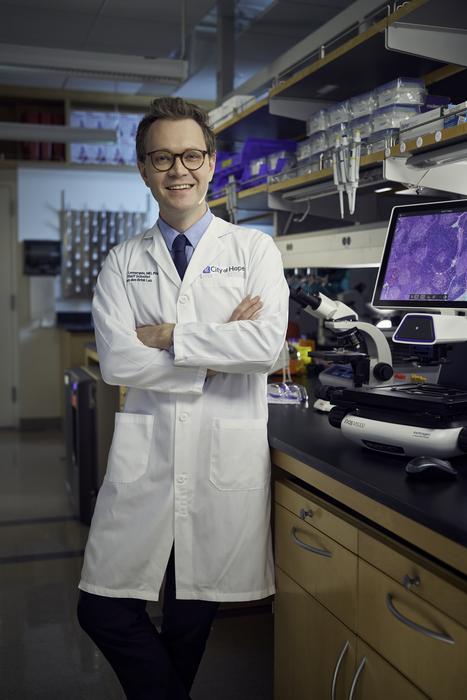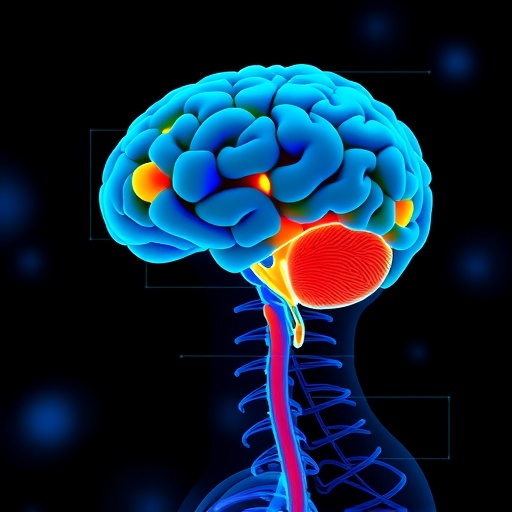
Groundbreaking Discovery: Regenerative Mechanism in Thymus Could Revolutionize Cancer Treatment
In a pivotal advancement for immunotherapy and cancer treatment, a team of international researchers has unveiled a novel mechanism that restores function to the thymus gland post-injury. Led by scientists from City of Hope, a renowned cancer research and treatment organization in Los Angeles, this groundbreaking study highlights the potential to rejuvenate thymic function and improve T cell generation in cancer patients. The findings were published in the esteemed journal Immunity, revealing the therapeutic promise of a specific subset of regulatory T cells capable of homing back to the thymus and initiating repair after damage.
The thymus, often overshadowed by other vital organs, plays a crucial role in the immune system by producing T cells. These immune cells are essential for combating infections and promoting an effective response against malignancies. Unfortunately, several factors, including cancer therapies, aging, and environmental stresses, can diminish T cell output by compromising thymic function. This depletion leaves individuals vulnerable to infections and various diseases, necessitating innovative approaches to restore immune integrity.
Lead author Andri Lemarquis, M.D., Ph.D., underscored the significance of this discovery, stating that the identified regulatory T cell recirculation mechanism enables the thymus to repair itself—a process not previously documented in scientific literature. This revelation opens new avenues for addressing thymic dysfunction, particularly in the context of cancer therapy and its associated challenges. The research team meticulously detailed their findings, elucidating the pathways involved in thymic regeneration.
The role of the thymus extends beyond mere T cell production; it serves as an educational institution for immune cells, providing essential training to ensure balanced immune responses. Dr. Lemarquis noted the delicate equilibrium necessary for our immune defense, highlighting that an overly aggressive response could lead to autoimmune disorders. The thymus thus emerges as a vital organ instructing T cells on how to navigate the complexities of immune challenges.
Sadly, the thymus is acutely sensitive to various insults, including stress and oncological treatments. Dr. Lemarquis pointed out that the shrinkage of the thymus is a predictable consequence of cancer therapies. Without adequate intervention, patients may experience a phenomenon known as immune reconstitution failure, where the generation of new protective T cells is severely hindered. This failure seriously compromises the immune system, significantly elevating the risks of subsequent infections and other health complications.
To investigate the mechanisms underlying thymus regeneration, Dr. Lemarquis and his team focused on two primary contexts: cancer therapies and the aging process. Utilizing murine models, the researchers examined the conditions under which thymic damage occurred and the regeneration processes that followed. By combining advanced imaging techniques and machine learning algorithms, they identified specific pathways active during thymic recovery, leading to the discovery of a rare subset of thymic regulatory T cells that secrete amphiregulin, a crucial growth factor for thymic repair.
Through intravenous administration of these regulatory T cells, the team observed a remarkable process: the specialized Tregs successfully migrated back to the thymus, where amphiregulin was instrumental in facilitating the regeneration of T cells. Further investigations using human tissue samples corroborated these findings, suggesting a translational potential for therapies aiming to leverage this mechanism in clinical settings.
The research revealed an unexpected finding: even aged mice, traditionally considered to have irreparable thymic damage, could demonstrate enhanced thymic activity upon receiving amphiregulin-secreting Tregs. This insight challenges long-held assumptions about thymic function in older adults, suggesting that therapeutic strategies designed to boost thymic repair could significantly impact cancer patient mortality rates by addressing risks associated with infections and immune deficiencies.
Looking forward, the research team is poised to embark on further investigations utilizing a large compendium of human thymic samples from cancer patients. This endeavor aims to unravel more about the complexities of thymic rebound and degeneration, enabling the identification of additional pathways that intersect with regulatory T cells, ultimately enhancing thymic functionality. The potential for synthetic biology applications in modifying T cells to overproduce beneficial factors such as amphiregulin is also an area ripe for exploration.
Dr. Lemarquis expressed optimism regarding the translational implications of this research, highlighting the collaborative efforts at City of Hope, which now boasts a dedicated thymic research program. The integration of computational biology with experimental immunology offers promising prospects for advancing our understanding of thymic regeneration and its potential therapeutic applications. By harnessing the discoveries made in this research, there is a substantial opportunity to enhance immune function in cancer patients, providing a new line of defense against the myriad consequences of cancer treatments.
The implications of this research are far-reaching, not only for those receiving cancer therapies but also for advancing our broader understanding of immune system dynamics and resilience. The findings have the potential to inform treatment protocols that prioritize immune restoration, fostering a new perspective on the management of cancer and its various complications. Ultimately, as research progresses, the possibility of utilizing these insights to develop novel therapeutic strategies that bolster immune health stands as a testament to human ingenuity in confronting the challenges posed by cancer and its treatment.
In summary, this pioneering study highlights an innovative approach to thymic regeneration, illuminating pathways that may soon transform the landscape of cancer treatment and immunotherapy. The promise of enhanced immune defense through a better understanding of regulatory T cell dynamics offers a beacon of hope for patients striving for recovery and longevity in the face of formidable health challenges. The relentless pursuit of knowledge in this field may yield results that not only address the complications of cancer therapies but also weave a new fabric of resilience in the immune profiles of patients worldwide.
Subject of Research: Thymic regeneration and its implications for cancer treatment
Article Title: Groundbreaking Discovery: Regenerative Mechanism in Thymus Could Revolutionize Cancer Treatment
News Publication Date: [Insert Date]
Web References: [Insert Links]
References: [Insert References]
Image Credits: City of Hope
Keywords: Thymus, Immune System, Cancer Treatments, Regulatory T Cells, Amphiregulin, Thymic Regeneration, Immunotherapy
Tags: cancer immunotherapy advancementsCity of Hope research breakthroughscombatting cancer with immune responseimmune function restorationinnovative cancer treatment strategiesregenerative medicine in cancer treatmentregulatory T cells therapeutic potentialT cell generation enhancementthymic function rejuvenationthymus gland role in immunitythymus gland self-repair mechanismthymus injury recovery mechanisms





